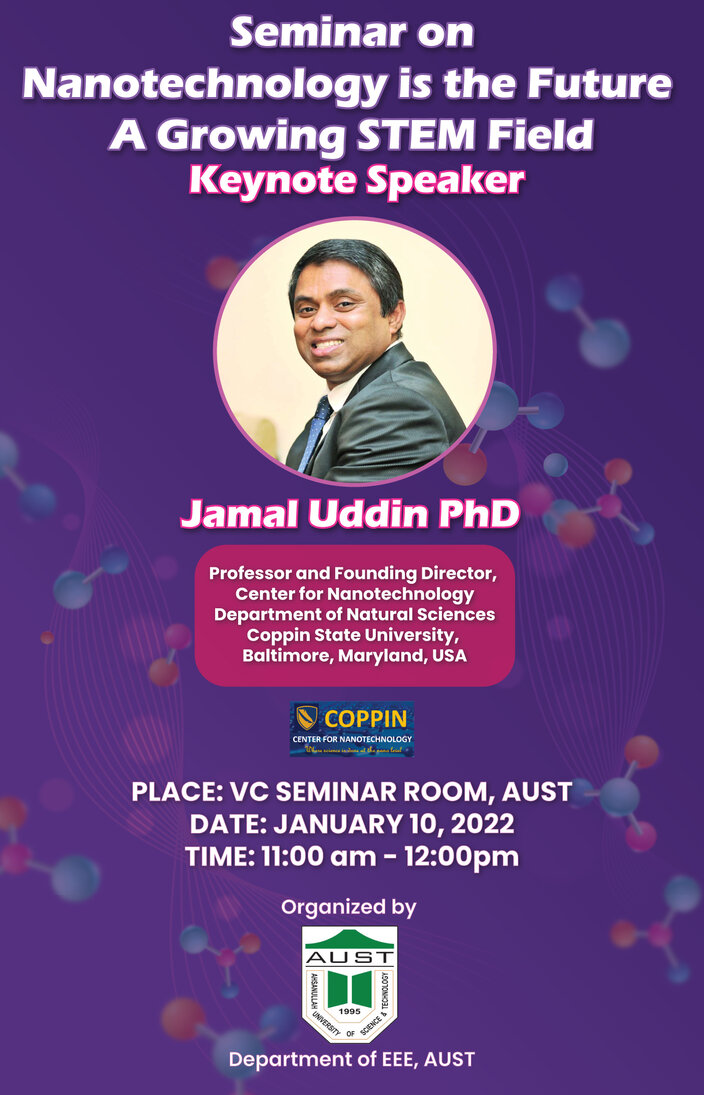
Date: 2022-01-06

Seminar on Nanotechnology is the Future | A Growing STEM Field
Speaker: Dr. Jamal Uddin
Professor and Founding Director, Center for Nanotechnology
Department of Natural Sciences
Coppin State University, Baltimore, Maryland, USA
Venue: Seminar Room of the Vice Chancellor, AUST (11 AM, Jan 10)
Abstract
Nanotechnology has attracted a lot of attention in recent years and has been used to benefit energy, health and the environment. Nanotechnology is generally understood to be the control of matter at dimensions between approximately 1 and 100 nanometers. At the nanoscale, materials attain new properties, different from that of the bulk material, and makes them versatile for different types of applications. Nanotechnology holds great potential in meeting the energy demands of the world. For instance, titanium dioxide nanoparticles are the main component of photovoltaics. One of the main advantages of nanotechnology is the large surface to volume ratio of nanomaterial which increases the exposed area of an object. The large surface area of titanium dioxide increases the amount of dye that is adsorbed into a dye sensitized solar cells. Different types of nanomaterial dyes have also been used as sensitizing dyes to produce dye sensitized solar cells. Nanotechnology has also opened the door for easy diagnosis, drug delivery and treatment of various diseases owing to the fact that biological processes occur at the nanoscale level. Gold nanoparticles, for example, have been used to image biological materials, treat disease conditions and deliver drugs to cancerous tissues. Nanotechnology is being used in several applications to improve the environment especially in area of cleaning contaminant, developing methods that have the potential of reducing the amount of pollution generated annually. An overview of the state-of-the-art in nanotechnology and its applications in energy, health and the environment will be presented.